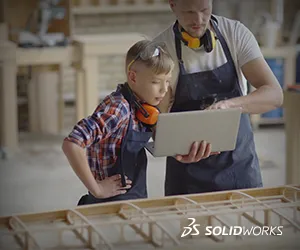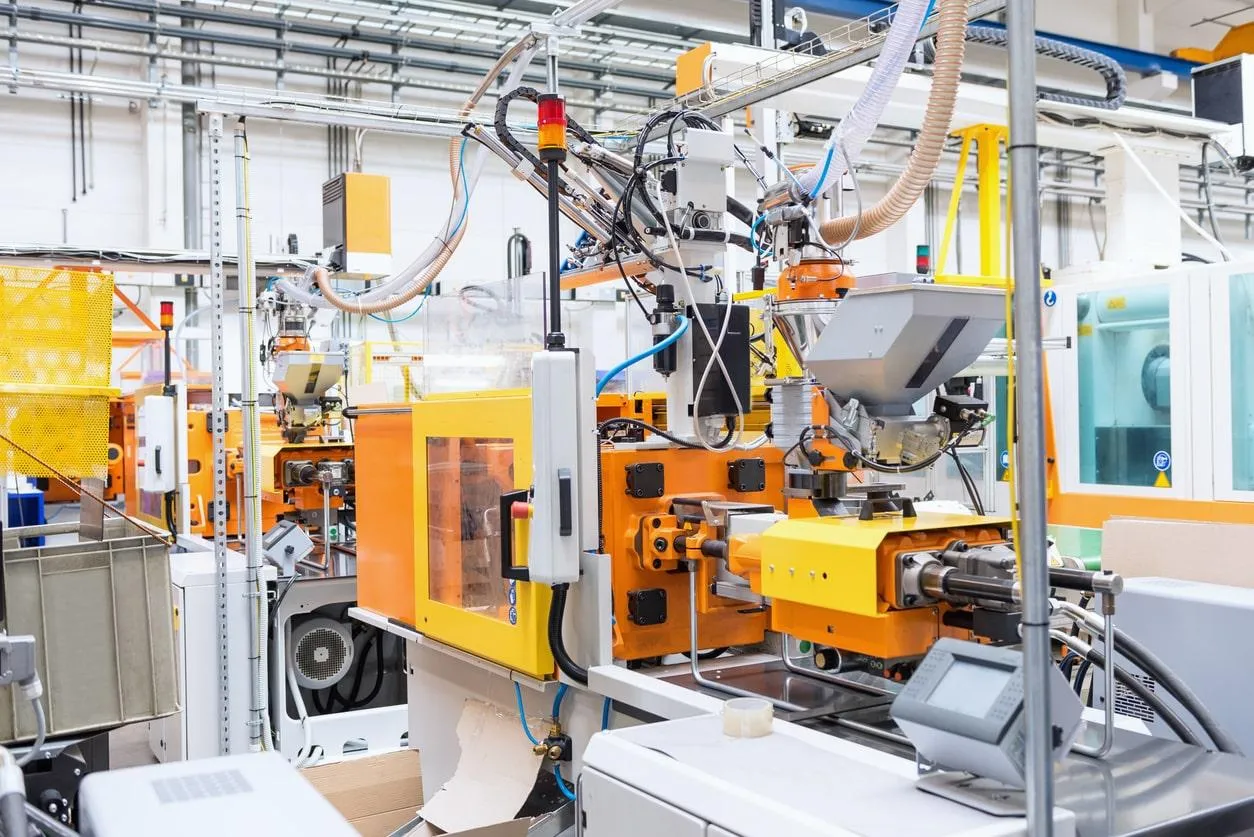Injection Molding
Discover what Injection Molding is, how it work is, and its usages in the industry.
Discover 3DEXPERIENCE SOLIDWORKS for Makers

What is the history of Injection Molding?
Molding is the process of shaping a liquid or flexible raw material using a rigid frame called a mold. This process, which is very popular today in many industries, took off at the height of the Second World War when the need for mass-produced products increased.
The Industrial Rise of Molding: Mass Production
In 1872, the American inventor John Wesley Hyatt and his brother Isaiah created the first injection molding machine. It was a simple machine that used a piston to push plastic through a hot cylinder into a mold. The engine was primarily employed for mass production of items such as buttons and combs.
The German chemist Arthur Eichengrün developed the injection molding press in 1919. In 1939, he filed a patent application for the injection molding of plasticized cellulose acetate, which was much less flammable than the solutions utilized at the time.
When the Second World War broke out, the need for cheap, mass-produced goods increased. For example, the war in Asia and attacks at sea disrupted rubber production. Tanks and other war applications generated a massive demand for metal. Plastics were used to fill these gaps, providing an affordable substitute. James Watson Hendry then created the first screw injection molding tool, which quickly became popular because of its precision and control, and therefore better production quality.
Throughout the post-war period, plastics remained popular. When business leaders recognized the enormous cost advantages over competing materials, they re-evaluated global supply chains. Plastics became firmly entrenched in the economy and manufacturing processes of the mid-twentieth century.
The Invention of Injection Molding Up to the Present Day
Hendry then developed the first gas-assisted injection molding system in the 1970s. The technique made it possible to manufacture complex parts, which could be cooled quickly. This greatly improved the flexibility and strength of the manufactured objects while reducing production time and cost. In 1979, plastic production surpassed steel, and in 1990, injection molding made extensive use of aluminum molds. Today, screw injection machines represent the vast majority of injection machines. Other widely used molding methods include blow molding, compression molding, or vacuum molding (thermoforming).
Now, the injection molding market has reached $300 billion. This process produces more than 5 million tons of plastic parts yearly worldwide. Almost all manufacturing sectors use it: electronics, automotive, household goods and appliances, etc. Plastic injection molding remains an affordable and efficient method of producing high-quality parts and products. Recently, the demand for biodegradable materials has increased for environmental reasons.
The technology used today is quite like the one used in the past. However, computers have facilitated the entire design and manufacturing process. Results are also more accurate, and plastic parts are now often the preferred choice for advanced technological and scientific applications.
What is Injection Molding?
Molding gives a shape to a raw material, liquid or flexible, employing a rigid frame called a mold. It is a hollow block filled with materials such as plastic, glass, metal, or ceramic raw materials. This hardens or freezes inside the mold, taking on its final appearance. Among the different processes, the most common are injection, blow, compression, and vacuum molding. While the design of molds and their prototypes can hinder complexity and financing, 3D printing becomes a relevant solution thanks to its speed of execution and its precision in the realization.
Injection Molding
In injection molding, the material melts and is then injected under pressure into a mold. The liquid plastic cools and solidifies. The operation can be carried out with many materials (metals, glass, thermoplastics, etc.). However, the most commonly used are
- Polypropylene (PP) represents about 38% of the world's production. For example, it is used for bottle caps as it is suitable for contact with food products, ABS, which makes up 27% of the production. Lego appreciates it for its high impact resistance. Each brick is thus designed with tolerances of up to 10 micrometers,
- polyethylene (PE), 15%,
- Polystyrene (PS), 8%.
Considering all other possible manufacturing technologies, injection molding of these four materials alone represents more than 40% of all plastic parts produced worldwide yearly.
The automotive industry is one of the industries participating in its growth since almost all plastic components in the interior of a car are injection molded. The industry particularly exploits
- Polypropylene (PP) for non-critical parts,
- PVC for its good weather resistance,
- ABS for its high impact resistance.
At least one of these materials can be incorporated into more than half of a vehicle's plastic parts, including bumpers, interior body panels, and dashboards.
In another area, the casings of most consumer electronic devices are injection molded. ABS and polystyrene (PS) are the most popular because of their incredible durability and good electrical insulation.
This process is becoming more and more popular due to its extremely low unit cost in high-volume production. For example, this technology can produce 1,000 to 100,000 units for $1 to $5 each. It offers high repeatability and good design flexibility.
Blow molding
Blow molding is a process by which hollow parts made of plastic, glass, or other materials are formed and assembled.
There are three main types of blow molding: extrusion, injection, and injection stretch.
This technique begins by melting the plastic and shaping it into a parison. This term refers to a piece of plastic in the shape of a tube, with a hole at one end through which compressed air can pass.
The parison is then clamped in a mold before blowing air into it. The pressure pushes the material outward to fit the mold. The mold opens once the plastic has cooled and hardened. Finally, the part is ejected.
Compression Molding
Compression molding is a technique in which the material, usually preheated, is placed in an open, heated mold cavity. The mold is closed by a top force or plug member. Pressure is applied to force the material into contact with all mold areas until the material has hardened.
This process has the advantage of molding large and fairly complex parts. Besides, this molding method remains one of the least expensive and wastes relatively little material.
Compression molding is primarily being developed to manufacture composite parts, replacing metal. This technique is generally used to design larger, flat, or moderately curved pieces. It is widely utilized in the automotive sector to make parts such as hoods, fenders, wings, and smaller, more complex objects.
Vacuum Molding
Vacuum molding is a simplified version of thermoforming, in which a plastic sheet is heated, stretched over a single-surface mold, and pushed against it by a vacuum. This process transforms the plastic into permanent objects such as traffic signs and protective covers.
It is possible to form relatively deep parts if the sheet is stretched mechanically or pneumatically before it is brought into contact with the mold surface and the vacuum is applied.
Materials suitable for vacuum molding are generally thermoplastics. The polystyrene sheet is the most common and easiest to use, with high impact resistance. It can be molded to almost any shape. It can retain both heat and shape when hot water is applied. This makes it a preferred choice for packaging products that are sensitive to taste and odor. This technique is also suitable for transparent materials such as acrylic, which is widely used in the aerospace industry, such as window canopies in the passenger cabins of fixed-wing military aircraft and the compartments of rotary-wing aircraft.
Get multiple quotes for your parts in seconds
